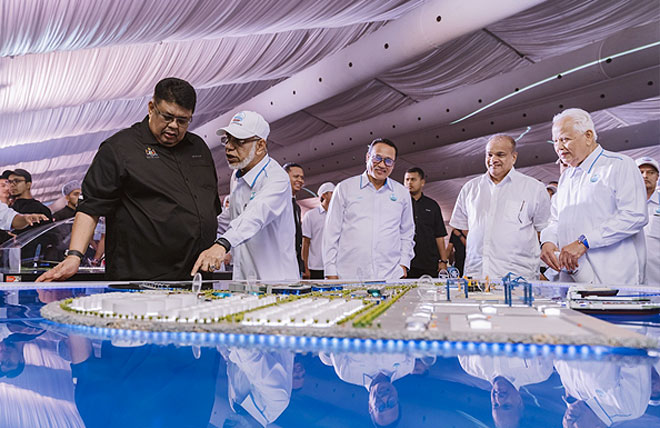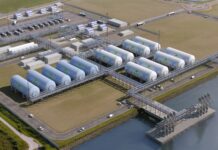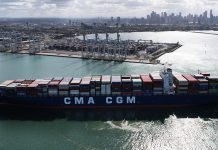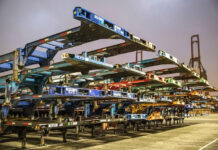
Kuala Linggi International Port (KLIP) announced the launch of construction works for its innovative port facility, marking a significant milestone in its journey to become a pivotal hub for global trade and commerce.
Set to be completed within 42 months, KLIP envisions transforming Kuala Sungai Linggi into a Green Global Industrial Hub for Energy Source, Port, and Maritime Services. The development plan encompasses the establishment of tank storage, shipyards, heavy industry fabrication yards, cargo handling areas, wharves and warehousing facilities, with an estimated investment of US$3.1 billion.
The Malaysian port announced the commencement of the contract awarded to China Harbour Engineering Co Limited (CHEC) valued at US$160 million. The total reclamation cost for this project on the 620,000 square meters island is US$290 million.
With a projected Gross Development Value (GDV) of US$21 billion and a Gross Development Cost (GDC) estimated at US$3.1 billion, KLIP is poised to significantly contribute to the Gross National Income (GNI) through foreign exchange earnings from international projects and Gross Domestic Product (GDP) from local industries.
As a private port, KLIP aims to redefine industry standards by integrating state-of-the-art technology, sustainable practices, and efficient logistics solutions. Located along the Straits of Malacca, KLIP serves as a vital link in major shipping routes, facilitating international trade between Asia, Europe, and the Middle East.
“The groundbreaking ceremony is a historic milestone for Kuala Linggi International Port—a significant step forward in our mission to become a world-class maritime hub. We are not just building a port; we are constructing a symbol of progress, collaboration, and innovation in the maritime ecosystem that stimulates economic development and creates opportunities for future generations,” stated Tan Sri Datuk Seri Dr Noormustafa Kamal Yahya, executive chairman of KLIP.
The cutting-edge facilities will be specifically designed to accommodate tank storage for handling liquid bulk cargoes, including Liquefied Petroleum Gas (LPG) and Liquefied Natural Gas (LNG), along with designated areas for ship Maintenance Repair and Overhaul (MRO). The port is poised to integrate advanced technologies such as green energy solutions, smart logistics systems, and real-time tracking to enhance operational efficiency and minimize turnaround times.
Furthermore, this initiative is expected to generate up to 10,000 skilled job opportunities and contribute significantly to the development of local communities. With an anticipated completion date in 2027, the construction phase of KLIP represents a pivotal moment for driving economic growth, expanding trade opportunities, and fostering technological advancements within the region.





